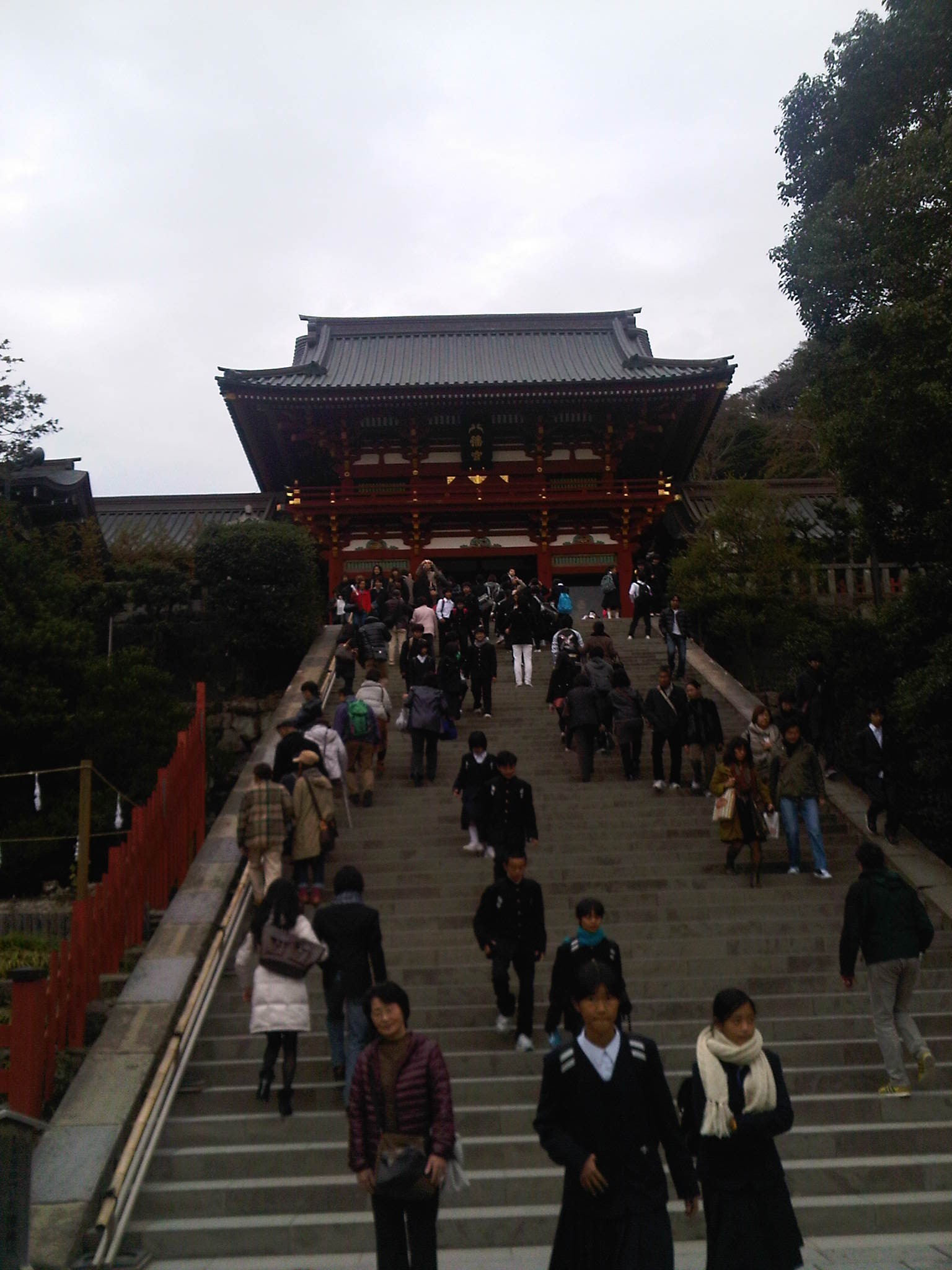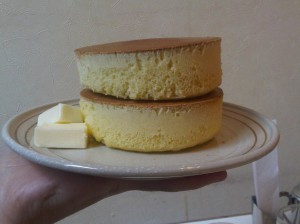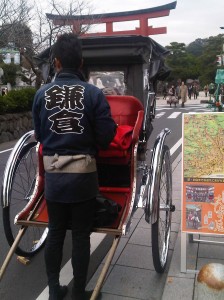
Kamakura is a popular tourist place in Japan. It is about one hour away from Shinjyuku station in Tokyo by train. The city offers a lot: beautiful sea, old temples and shrines and good food and alcohol. With its history and many prominent authors the city has produced, there are many cultural offerings in Kamakura.
There are two things you should do in Kamakura. First, go to Iwata Coffee. It’s just one minute away from the east gate of Kamakura station. Its famous hotcakes are on display, which catch visitors’ eyes. This is because Iwata’s hotcakes are a dream come true for Japanese people: two very thick cakes piled up high on a plate with butter and maple (pictured). They seem to be very effective way to attract customers.

Iwata Coffee’s hotcakes
Iwata’s hotcakes are surprising in many sense. First of all, its beautiful round shape cakes. It’s usually hard to make pancakes round at home like Iwata’s. Iwata’s hotcakes are like the moon. They are around 10cm in diameter. They seem to have Japanese values: Japanese people care about the look of food.
Then, Iwata’s hotcakes are very thick. Pancakes are usually thin and soft so that we can finish them quickly. Iwata’s hotcakes are using more amounts of ingredients than normal pancakes, making it possible to be 3cm high. The outside of the pancakes is crisp and the inside soft. This makes you enjoy eating them at slow pace. Presumably eating slowly is good for digesting.
Third, it takes a long time until you can start eating them. Cooking pancakes is usually easy; at Iwata it isn’t. Staff told me that it would take about thirty minutes to cook pancakes. Moreover, in the tourist season there are often people queuing up for its hotcakes, which means you have to wait for at least 1-2 hours to eat them. Perhaps, there could be no pancakes in the world that take longer time to cook than Iwata’s. But Japanese people do wait for the possibly slowest pancakes in the world. Iwata’s hotcakes are literally selling like hotcakes.
But the wait is worth it. Taste is fantastic. Volume? As staff say, two pancakes (one plate) are right amount for two ordinary Japanese people (Some foreigners like big western people may be shocked). It is also a good place to chat over coffee: its retro decorations make you feel comfortable.
Second, try a rickshaw (jinrikisha) ride. This service has been provided by Ebisuya since 2001 and is good: a rickshaw driver is funny and tells lots of stories about Kamakura (probably only in Japanese). He takes you to beautiful old temples and takes pictures in front of them for you. While on the rickshaw, you can enjoy seeing things from different angles. That’s the point of this. Fares depend on numbers, duration (10min, 30min, 60min) and the distance travelled.

Ebisuya’s rickshaw driver shows you Kamakura
Both Iwata coffee and Ebisuya have one thing in common. Their staff offer excellent hospitality with a wonderful smile on their face. I was impressed and am sure you will have a good time in Kamakura.

Ryo Kubota is a staff writer at Transpheric Management in Tokyo as well as a freelance writer. He has covered Sports for the Nippon Newspaper Company in Tokyo and teaches at a private tutoring school in Iruma, Japan. Having studied in both Tokyo and England in the areas of sociology, he has a keen interest in the world at large.








